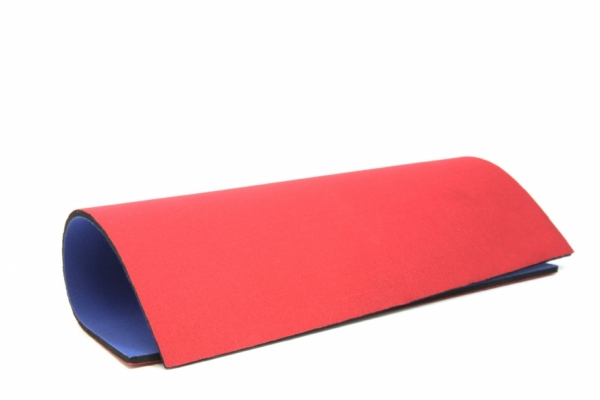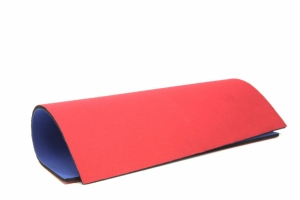
Neoprene is a trade name for the somewhat less catchy foamed polychloroprene. Originally developed in the 1930s as oil-resistant plumbing insulation, it was a fairly early type of synthetic rubber. It is probably most familiar to us as the insulating material used for wetsuits, drysuits, gloves, boots and helmets for scuba diving and water-sports. A person’s survival time can be raised from four to almost 24 hours when wearing a diving suit in cold water. It also floats, which is actually not that helpful when diving. Neoprene’s spongy texture is also good for cushioning and protecting things, as in laptop bags, mouse-mats and orthopaedic knee braces.
To make Neoprene as we know it, the raw liquid rubber is mixed with additives, foamed with gas or air, and baked into what resembles a big rubber loaf of bread. This is then sliced into the required thicknesses to give maximum stretchiness and, in this case, laminated between two pieces of nylon fabric to give it strength and softness. The resulting material is very strong and flexible, but exceptionally light and insulating.
Sample ID: 449
Add materials you find interesting to your own selections.
Use the  button to select a material and get started.
button to select a material and get started.

